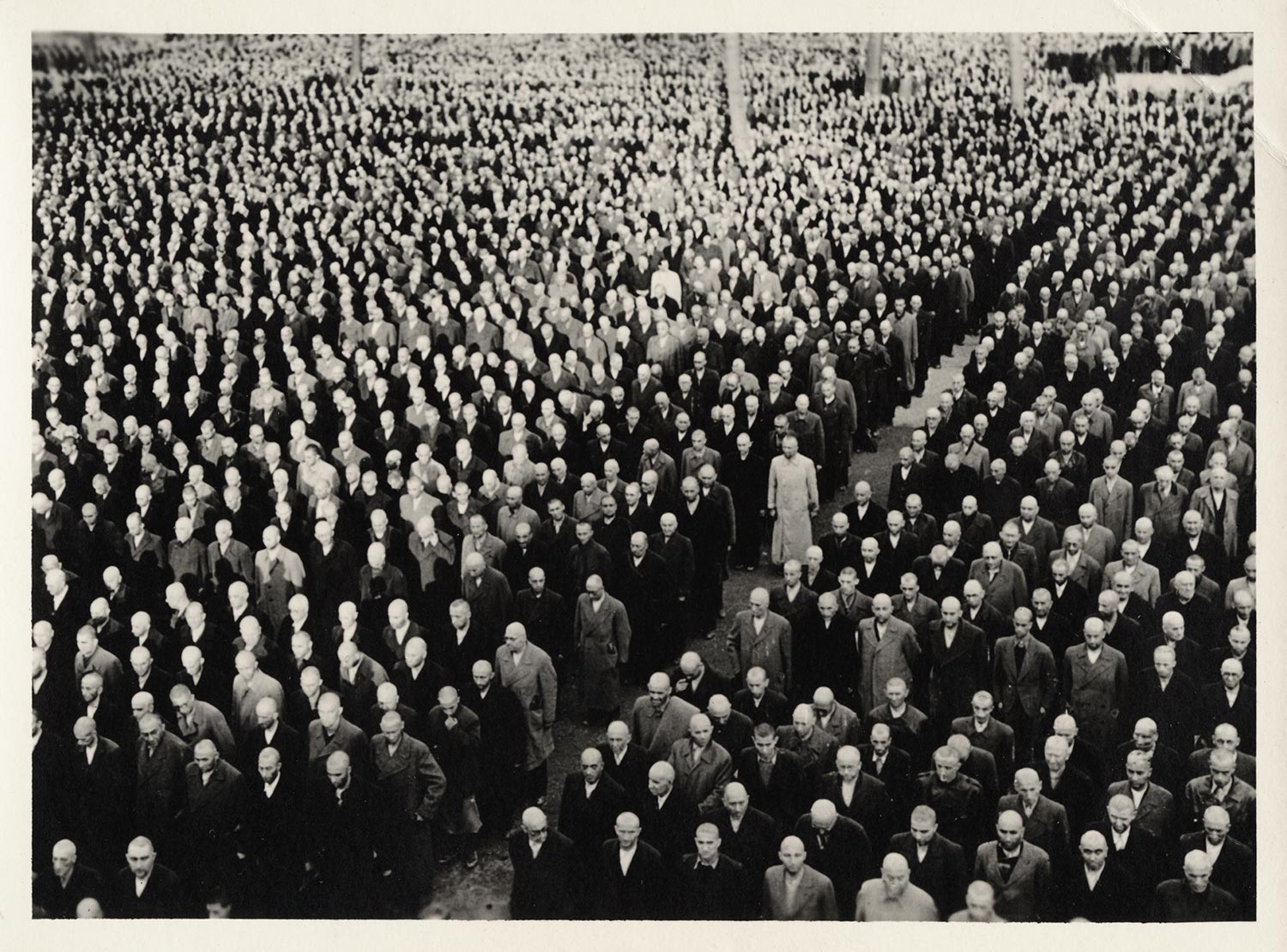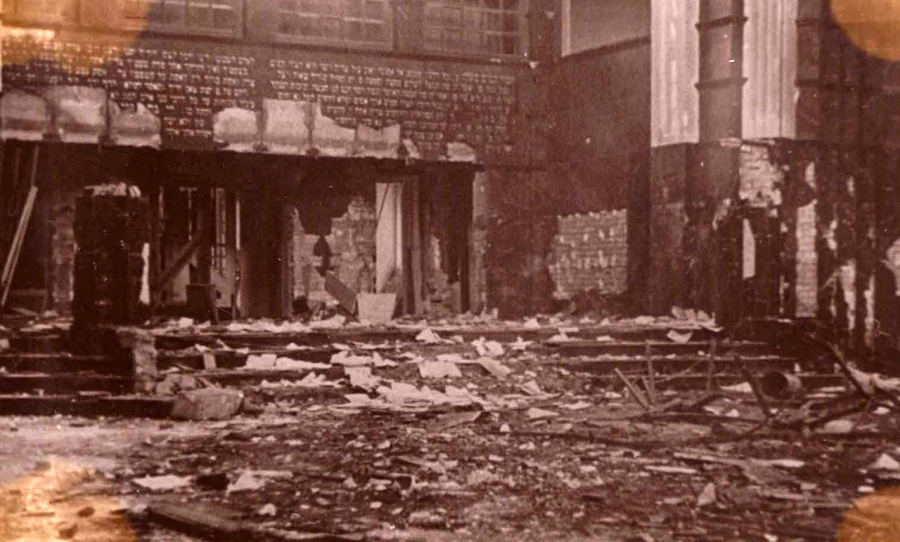- Pulished by
-
JDC at
-
November 15, 2022
Kristallnacht (German for Night of Broken Glass) was a pogrom implemented by the National Socialist Party that commenced on the evening of November 9 and continued through until the 10th in 1938, that many historians acknowledge to be the start of the Holocaust.
The name Kristallnacht originates from the broken glass that lined the streets of Germany and Austria in the aftermath of the brutal pogroms, from the shattered windows of synagogues, residential properties, and businesses owned by Jews.
While this pretty euphanism easily imprints on the mind, it does little to capture the extent of the horrors inflicted during those two days and nights. This article provides a succint summary of what took place rather than a deep dive into the full scale of the atrocities.
Below we have covered some key points.
Origin
Kristallnacht was instigated by Nazi Party members as a response to the assasination of Nazi Ernst Vom Rath, an embassy official stationed in Paris. The assassination was carried out by a young Polish Jew Herschel Grynszpan inside the German embassy in Paris.
The assasination is believed to have been in response to the mass expulsion of thousands of Polish Jews with German citizenship from the Reich, leaving many of them completely displaced with nowhere to go, among them Herschel’s parents.
When Vom Rath died two days later, incidentally on the anniversary of the 1923 Beer Putsch (a significant date for the Nazi Party). The Nazi Party used the act of Herschel Grynszpan to instigate a wave of antisemetic attacks.
Joseph Goebbels, the Minister of Propaganda further incited the wave of attacks by coordinating a announcement to be sent through Germany and Austria, urging violent reprisals in the form of spontaneous demonstrations. A telegram from Gestapo cheif Heinrich Müller’s office to police units throughout the state read “in shortest order, actions against Jews and especially their synagogues will take place in all of Germany. These are not to be interfered with.”
November 9
The evening and early morning that ensued would serve to be one of the prominent marks of a horrific epoch for the European Jewish community.
During November 9 and 10, 1938 over 1000 Synagouges were descrated and burned to the ground including religious scrolls and prayer books destroyed. Jewish businesses were looted and shop front windows shattered, and over 30,000 Jewish men were arrested and taken off to concentration camps and prisons (expansion was carried out on concentration camps to accomodate the new influx of prisoners)

At the forefront of this destruction was the secret police, Hitler youth parties and the SA. An enormous amount of synagogues burned well into the night in full display of the public and of local fire brigades, who had received orders to intervene only to prevent the scorch reaching ‘Aryan’ buildings.
Amongst the damage, Berlin and Vienna were particularly badly affected, with instances of Jews humiliated within the public forums, beaten, and in some cases, murdered.
Aftermath

In the immediate aftermath of the widespread damage that unfolded, the main topic of conversation on the lips of the Third Reich was the property and infrastructure damage that had occurred as a result.
The repair bill was a painfully costly one, and the German government was determined to bear as little of the damages as possible.
The blame was shifted officially to Jews, with insurance companies banned from payouts to Jewish clients, and the Jewish community issued an atonement fine to the tune of one billion Reichsmarks (about $400 million USD in 1938)
It was an action that effectively removed Jewish individuals from any influence in the economic tapestry of Germany (it was already illegal for a Jew to hold a position in public office), whilst also drastically limiting their freedoms and any rights that came with citizenship.
This was a grand catalyst for the mass emigration of Jews that followed in the coming months, as many arrested were given the opportunity to leave the country if they provided evidence of intent to migrate, while others were forced by circumstance. 3000 visas were issued for Jews to leave Germany, with many immigrating to Australia.
JDC’s Involvement
JDC had been assisting Jews in Germany throughout the 1930s, as they became disenfranchised and were barred from participation in German politics, culture, education, professional life, and social outlets. As the largest foreign organization in Germany whose goal was to help Jews, JDC monitored the country’s treatment of its Jews closely.
An eye witness of the events in Berlin and Frankfurt sent a detailed report to JDC headquarters about the horrific event, which destroyed 267 synagogues, shattered the shop windows of an estimated 7,500 Jewish-owned commercial establishments, desecrated cemeteries and claimed the lives of at least 91 Jews.
The name of this eyewitness is unknown, as it was kept secret at the time for security purposes. However the report, combined with other accounts, was helpful in mobilizing JDC’s response to the catastrophe. JDC and the United Palestine Appeal joined forces to raise money for overseas operations.
They created the United Jewish Appeal through which they collected tens of millions of dollars to help Jews in Nazi Europe.
Conclusion

Kristallnacht served as a significant moment in the events leading up to WW2, further highlighting antisemetic laws were on the course to be firmly enforced the hands of the SS, and would continue to amplify over time. Of course, this wasn’t exactly new, as the party had been implementing antisemetic policy and laws since 1933 (between 1933 and 1938, over 400 anti semetic laws had been enacted, emerging from dates such as the Nuremburg and Evian Conferences.)
What made Kristallnacht particulary devastating was its status as the first recorded event of mass incarceration of the Jewish ethnicity realised by the Nazi Party, solely for the crime of being a Jew in Germany. It would be the one of the many dominos to fall in what would be a consistent trajectory until the end of WW2.
Get updates from The Joint & JDC
It’s the easiest way to keep up to date with all our latest news, events and fundraising activities.
© 2024 The Joint Australia | Partner of American Jewish Joint Distribution Committee, Inc

